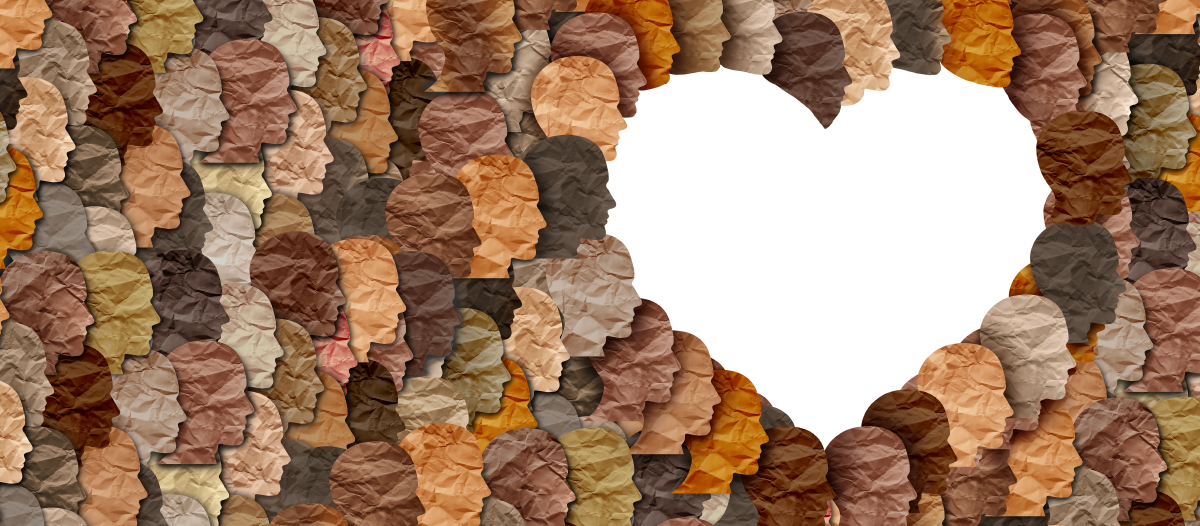Teaching Diversity Beyond Black History Month

Growing up, I always looked forward to Black History Month at my public school in New York City. My teachers taught lessons about Black people who made notable contributions to our country. We sang spirituals that my ancestors sang and recited works from great writers such as Langston Hughes, Gwendolyn Brooks, Maya Angelou, Richard Wright, and James Baldwin. I felt so proud to learn about my people in such positive ways. It was a validating time of the year, not only culturally and educationally, but socially and emotionally, too. But it was the shortest month of the year (and, before 1976, had been celebrated for a mere week), and when it was over I had to wait another year for this type of instruction to occur again.
Now, as a teacher myself, I support and encourage educators to teach cultural awareness, diversity, and responsiveness with veracity year-round. In our diverse world, people from many cultures contribute to our lives all year, and we do not hear enough about these narratives, struggles, and successes that meaningfully impact our country and world. Mainstream curricula in the United States still emphasize White, dominant culture as the history maker that we should teach our students, many of whom are BIPOC (Black, Indigenous, and People of Color) youth. Here are some ways you can teach cultural equity, awareness, and responsiveness year-round.
year, and we do not hear enough about these narratives, struggles, and successes that meaningfully impact our country and world. Mainstream curricula in the United States still emphasize White, dominant culture as the history maker that we should teach our students, many of whom are BIPOC (Black, Indigenous, and People of Color) youth. Here are some ways you can teach cultural equity, awareness, and responsiveness year-round.
Celebrate Your Students’ Diversity in the Classroom
Allowing your students to regularly share what is special about their backgrounds empowers them to listen and learn from each other. Morning Meeting, Responsive Advisory Meeting, and closing circle provide daily opportunities for students to share their cultural traditions, celebrations, stories, entertainment, and customs and make them available for all to hear and learn about with empathy.
Make Room for Cultural Appreciation
Encourage the appreciation of various cultures year-round by providing opportunities for children to share their cultures and learn more about their classmates’ cultures. These opportunities can occur through project-based learning; historical reading, writing, and social studies lessons; student book clubs focusing on cultural equity and social issues; current events throughout the year; and your thoughtfully selected read-alouds.
You can also use quiet time, brain breaks, energizers, or mindfulness activities to expose your students to authentic Indigenous styles of music (such as jazz, salsa, cumbia, djembe, mbira, or Kompa). For example, one of my students shared her music playlist, which included her favorite song, “Amor Prohibido” by Selena Quintanilla, a Mexican-American cumbia artist. During a brain break that day, we relaxed for a couple of minutes from our schoolwork by listening and singing along to a cumbia rhythm and hearing my student share why it is so special to her.
Reach Out to Community Partnerships
Community partnerships that support diversity can be wonderful resources for teaching diversity with sincerity throughout the school year. Libraries, museums, historical societies, educational organizations, and publishers often house a wealth of primary and secondary sources that provide culturally diverse perspectives on historical and contemporary lifestyles. Consider partnering with these organizations, many of which have gifted writers, artists, performers, historians, and curators who are willing to share their diverse collections and resources via engaging programs, exhibits, media, and webinars for youth, often for free or at a low cost.
Use Primary Sources in Your Instruction
In my teaching experiences, I find over and over again that students become engaged when learning from primary sources. They appreciate opportunities to make observations from diaries, documents, and photographs and then using those observations to make inferences about history. For example, when my students read excerpts from Christopher Columbus’s diary in Rethinking Columbus: The Next 500 Years, they began to think critically about his diary entries about the Indigenous people he met when he arrived in America. They developed a different understanding of him as an explorer. There are many educational organizations that provide access to these primary sources for educators to use, which you can find in the list of resources at the bottom of this article.
Do the Work
I learned from the People’s Institute for Survival and Beyond (PISAB) that there is no quick fix in undoing racism. The dominant approach to teaching history, which has underrepresented and marginalized BIPOC narratives for far too long, repeatedly stigmatizes and silences BIPOC voices and experiences, perpetuating harm and trauma. As educators, we must commit both to spending the time necessary to educate ourselves about this structural injustice and to staying devoted to disrupting it. We must understand that the narratives and histories of marginalized people are part of both American and world history.
This year, the Zinn Education Project is challenging educators to teach the truth about our history. I urge you to join me and other educators in committing to teaching BIPOC histories and narratives year-round, which means understanding the role that racism plays in preventing truthful education about these narratives and cultures. This work cannot be done exclusively by BIPOC communities. There is room for all of us to have courageous conversations and do courageous work—with our students and each other.
In twenty-first-century education, we owe it to all students to learn and represent the narratives and histories of all cultures, not just one dominant culture, truthfully and respectfully. When we can embrace the value and contributions of our students’ cultures and backgrounds, we can journey toward teaching in a zone of honesty and liberation that is devoid of stereotypes and marginalization of BIPOC youth and families. When we do so, we affirm that all cultures participate in creating a world that we can value and joyfully appreciate, with room for us all.
Helpful Resources
The People’s Institute for Survival and Beyond
Pledge to Teach the Truth – Zinn Education Project
Written by Ina Pannell-Saint Surin, a consulting teacher for Center for Responsive Schools and a special education teacher with over twenty-seven years of experience teaching elementary and preschool-aged children
